Transposing music is a great skill that every musician and producer should master.
It can help you tweak songs to different vocal ranges, align your music with various instruments, and even give your tracks a fresh, unique sound.
Plus, it allows your music to really shine in any key and can help make sure that your arrangements flow without a hitch.
As a producer, learning how to transpose music is super beneficial because it’ll give you the flexibility to work with different keys and scales effortlessly.
And it also enhances your understanding of music theory, which is always a plus (because remember, you can’t break the rules without learning them first).
You’ll be able to create more dynamic and versatile tracks that can easily be manipulated to any performance or recording situation.
That’s why, in today’s transpose music article, we’ll be breaking down:
- What transposition is and how it works ✓
- The theory behind scales and key signatures ✓
- How to understand and use intervals ✓
- The relationship between relative major & minor keys ✓
- A step-by-step guide to transposing melodies & chords ✓
- Techniques for transposing for different instruments ✓
- The best tools and software for transposition ✓
- Advanced tips for transposing complex progressions ✓
- Creative ways to use transposition in your arrangements ✓
- Much more to help you transpose music like a boss ✓
After reading this article, you’ll know how to transpose music like a true professional so your tracks sound polished and cohesive.
Plus learn how to switch keys successfully and with confidence so you can dominate any transposition challenge that comes your way.
All in all, it’s going to help improve your skills as a musician/producer.
So, let’s dive in…
Table of Contents
What is Transposition? Breaking it Down
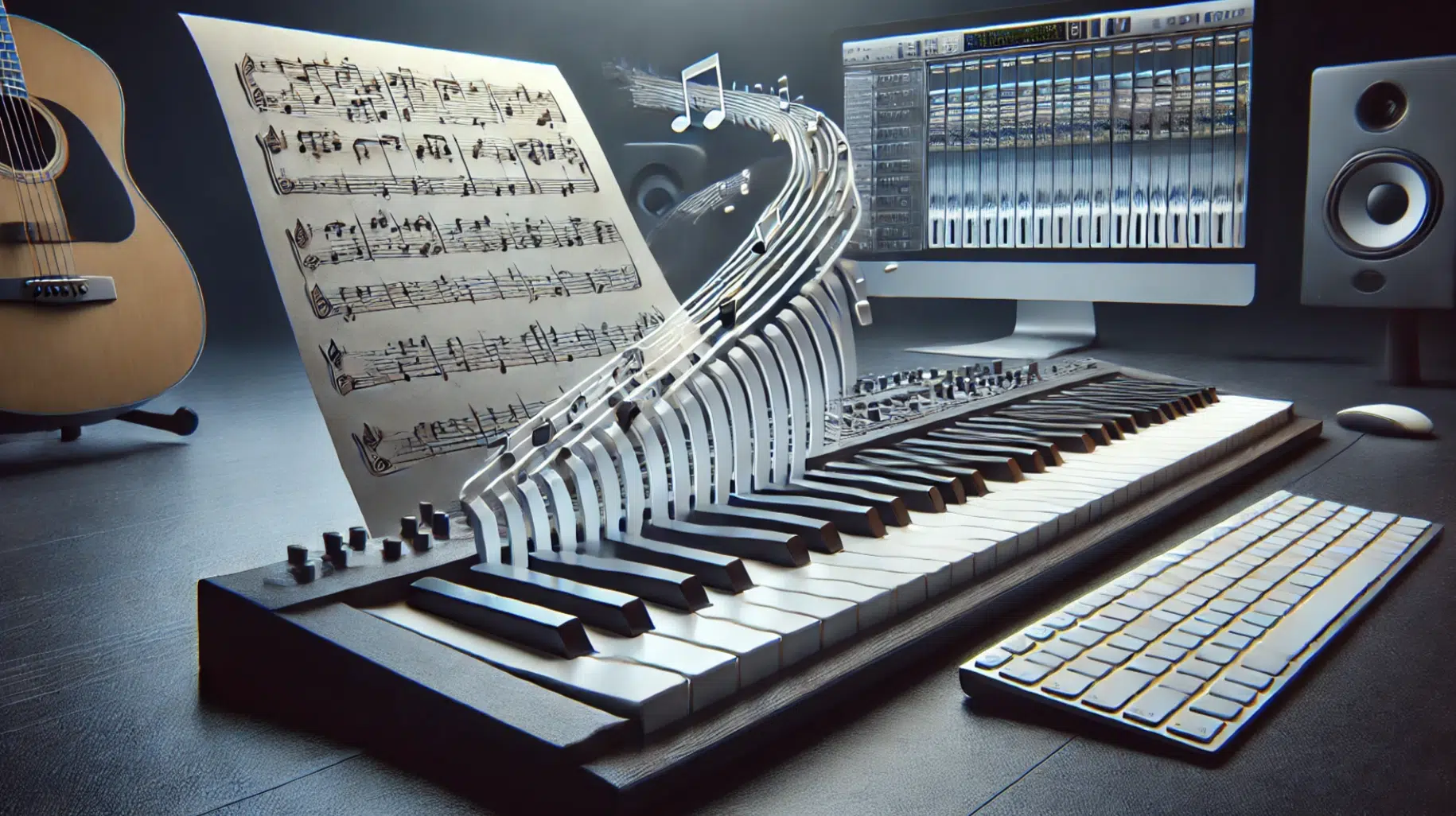
Transposition, in a nutshell, is the process of shifting the pitch of every note in a piece of music by the same interval to move it into a different key.
For example, if you have a melody in the key of C major and want to shift it to the key of G major, you would simply transpose every note up by a perfect fifth.
It keeps the melody’s intervals and structure intact while changing its key signature 一 making it compatible with the new key.
A common example of transposition is moving a song into a different key to match a vocalist’s vocal range…
Like, for example, shifting from E major to C major for a singer who finds the original key too high (or one note higher if the original key seems too low for the vibe).
Understanding transposition is super important because it allows musicians like yourself to adapt your tracks to fit:
- Various instruments
- Vocal ranges
- Performance contexts
So, needless to say, it’s an essential skill for producers and performers alike.
Don’t worry, we’ll break it all down in detail so you get the full picture and really understand how to transpose music regardless of the goal.
The Theory Behind Transposition
Before diving into the actual processing of transposing music, it’s important that we cover the theory behind it. It’s the easiest way to get a solid grasp of scales, keys, intervals, and how these elements work together to create a solid outline for transposition. So, let’s get into it so you can understand how to transpose music.
-
Understanding Scales and Keys
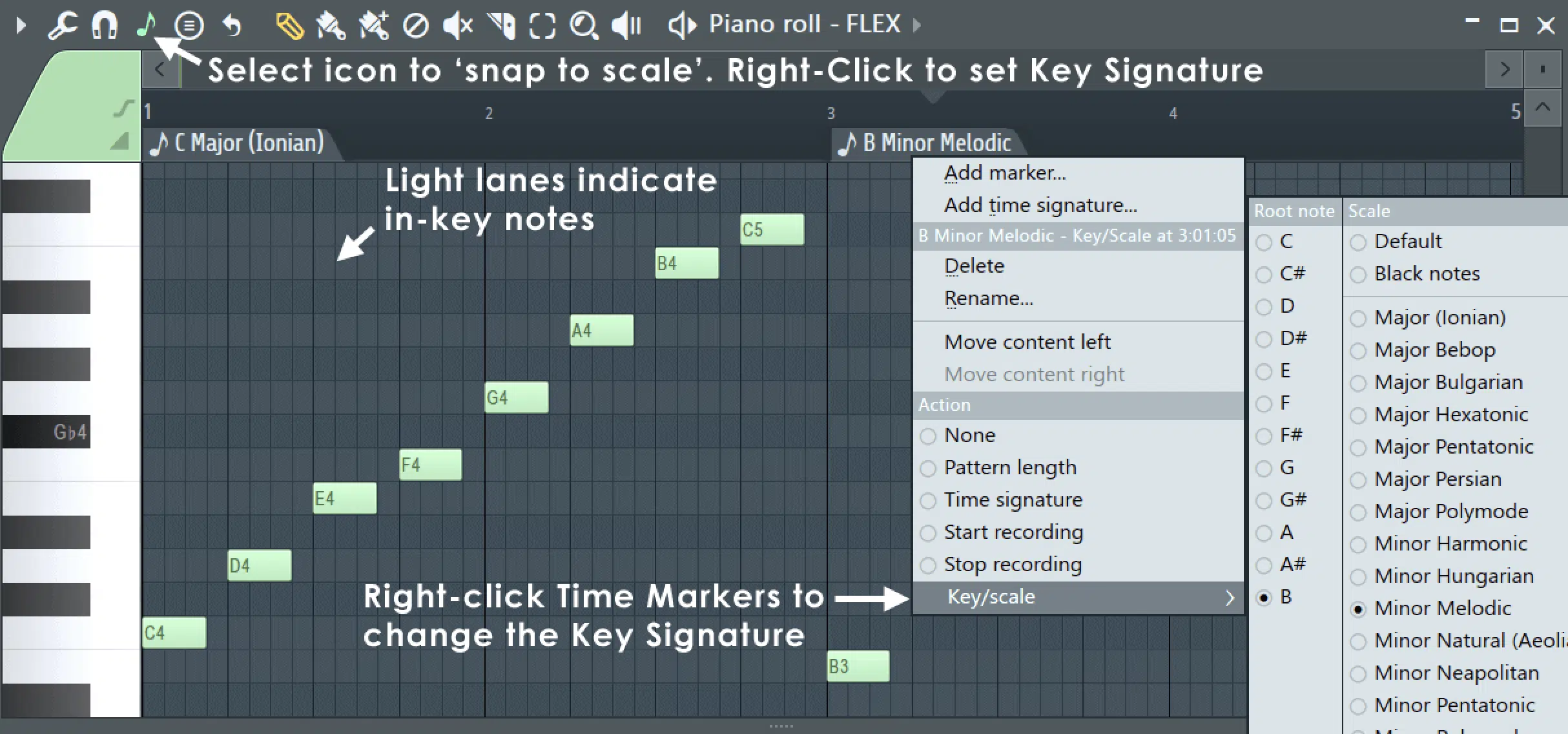
FL Studio
Scales and keys are the building blocks of music theory as I’m sure you know, and are super important when it comes to transposition.
A scale is a series of notes ordered by pitch (typically spanning one octave).
Each key is defined by a specific scale, and the key signature indicates which notes are consistently sharp (♯) or flat (♭).
For example, the key of G major has an F# in its key signature, while D major includes both F# and C#.
When you transpose music from one key to another, like moving from C major (no sharps or flats) to D major (two sharps), you change the scale used.
And, in turn, you’re changing the key signature as well 一 meaning that every note in the music notation needs to be adjusted in order to fit the new key you’re working with.
For instance, a melody that starts on C in the key of C major will start on D when transposed to D major, with each subsequent note similarly shifted to fit the D major scale.
NOTE: If you want to learn everything about scales or key signatures, we’ve got you covered.
-
Intervals: The Building Blocks of Transposition

Dorian Scale Intervals
Intervals are the distances between two notes and are super important when you’re learning how to transpose music, or when attempting to master music theory.
An interval can be as small as a half step (like from C to C#) or two steps, or as large as an octave (from C to the next C).
When transposing, you shift every note in the music by the same interval to maintain the:
For example, if you’re transposing a melody up by a major third, you would move every note up by that interval (pretty simple, right?).
So, a C would become an E, and a G would become a B.
Understanding intervals ensures that you can accurately transpose music while preserving its original key character, regardless of the key signature.
So, you can play around with different transposition combinations all day (and of course, practice makes perfect, so don’t slack in that department).
This skill is especially useful when you need to quickly transpose a piece by ear or when working with transposing instruments like the clarinet or trumpet.
This is because they naturally play one note different from what’s written in its music notation.
-
Relative Major Keys and Minor Keys
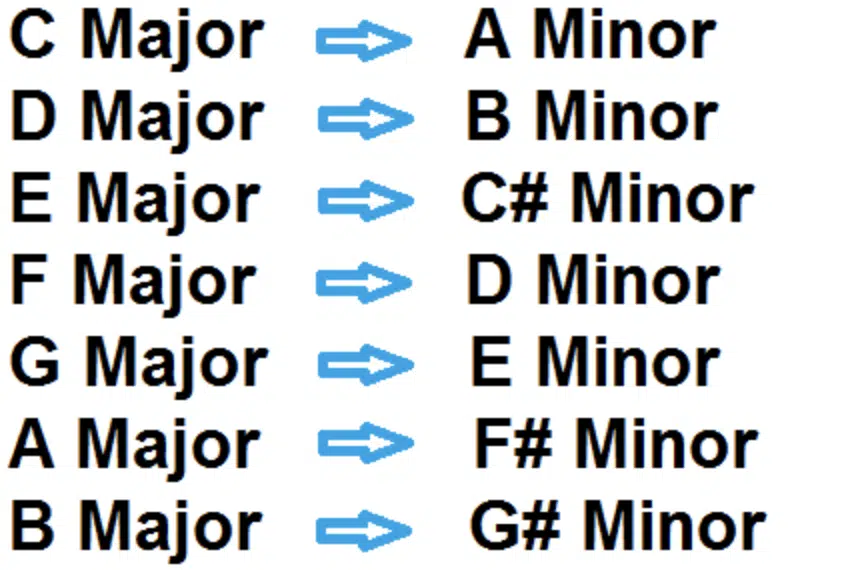
Relative major and minor keys are pairs of keys that share the same key signature but have different tonal centers… Meaning, they start on different notes.
For example, C major and A minor both have no sharps or flats in their key signature, so they are relative keys.
When transposing music from a major key to its relative minor, you’re simply shifting the tonal center while keeping the same key signature.
For example, if you transpose a melody from C major to A minor, the notes that were centered around C will now center around A.
This change affects the overall mood and feel of the music, because:
- Major keys are more bright, happy, and cheerful.
- Minor keys are sadder and really tug on people’s heartstrings.
Understanding the relationship between relative major and minor keys is key (no pun intended) when you transpose music.
This is especially true when you want to maintain the same key signature while shifting the emotional tone of the piece.
NOTE: A good example would be when you want to transpose a song in a major key to its relative minor to create a different emotional impact. Like, turning a happy melody into something more melancholic by moving from C major to A minor.
How to Transpose Music: A Step-by-Step Guide
Now that you know the theory behind transposition, it’s time to dive into how (exactly) to transpose music, step-by-step. This section will break down the process for transposing melodies, chords, and for different instruments. It’ll give you the tools needed to transpose music like a boss.
-
Transposing Melodies
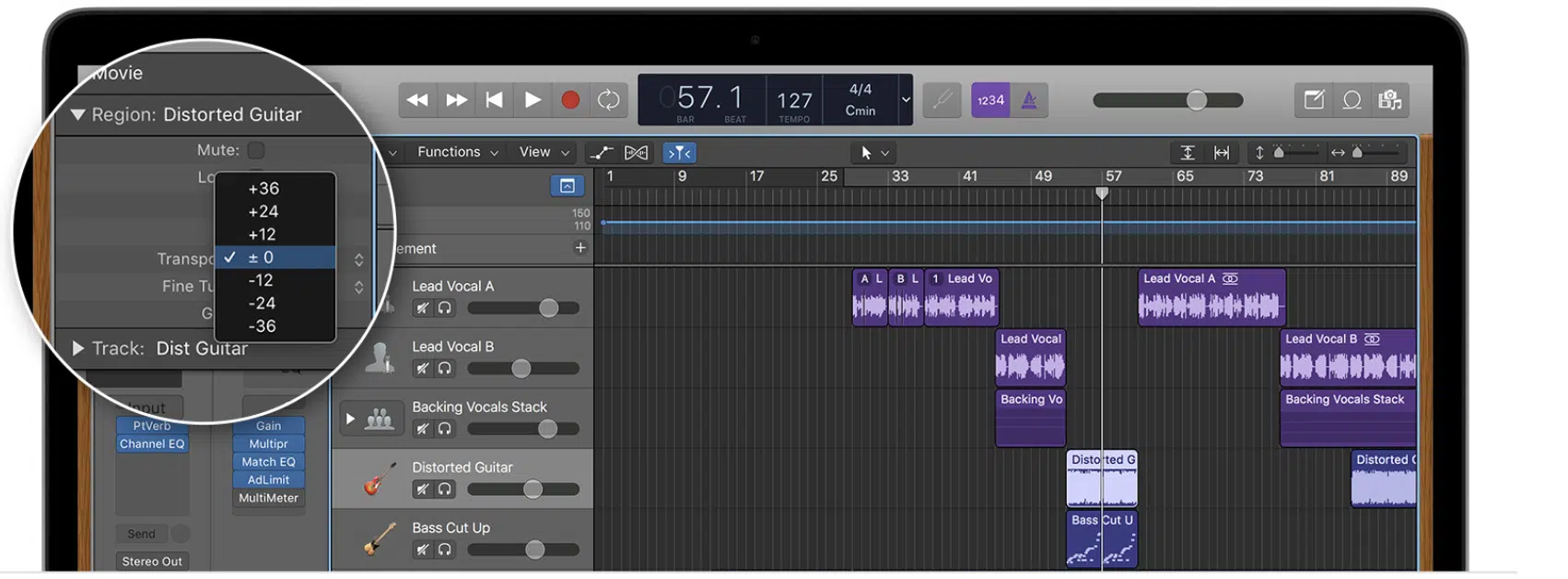
Transposing a melody involves shifting every note in the melody by the same interval to move it into a new key.
For example, if you need to transpose a melody from the key of F major to the key of G major, you would raise every note by a whole step (or two half steps).
If the melody starts on an F note, you would play it as a G note in the new key.
This shift/transposition applies to every one note in the melody 一 ensuring that the intervals between the notes remain the same.
It will keep that melodic structure while giving it some new edge.
A great example is when a singer needs the melody of a song to be in a higher key to fit their vocal range…
So, you might transpose it up by a minor third, shifting all the notes accordingly.
Tools like your DAW often have features that allow you to transpose music/melodies easily by specifying the interval or the new key, which we’ll break down in a few sections.
However, understanding the manual process ensures you can do it by ear, or, be on point when it comes to transposing sheet music as well (sight transposition).
NOTE: In FL Studio, you can use the pitch shift feature to transpose a melody within the piano roll, adjusting the entire sequence by the desired interval.
-
Transposing Chords
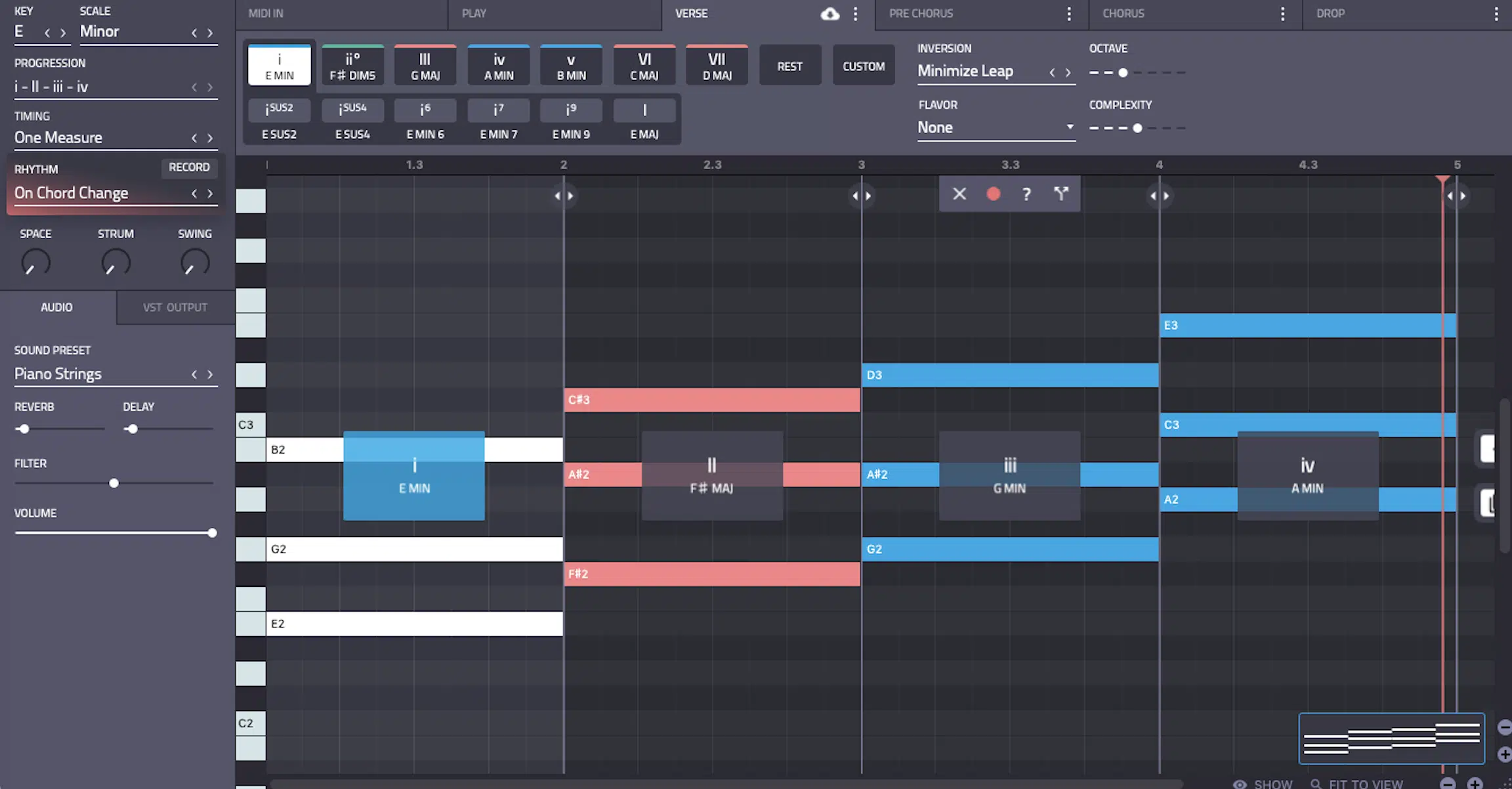
When transposing chords, the process is similar to transposing a melody, but with an added layer of complexity because you must transpose multiple notes at the same time.
For example, if you’re transposing a chord progression from the one key of E major to the key of F major, you would raise each chord by a half step.
A chord like E major (consisting of the notes E, G#, and B) would become F major, consisting of F, A, and C.
This shift makes sure that the harmonic relationships between the chords remain consistent in the new key.
Let’s say you were remixing a track to match a different tempo or genre (like turning a pop song in the key of D major into a house track with a deeper vibe), you might transpose the chords down to B minor.
It’ll help you nail down that darker, more intense vibe.
This shift not only changes the key but also alters the emotional impact of the music, making it match the new style while still retaining the essence of the original track.
When working with digital audio workstations (DAWs), you can use MIDI tools to transpose entire chord progressions easily.
Simply select the progression and apply a pitch shift or use a transposition function within the software itself.
For example, Logic Pro X allows you to select a region of MIDI chords and transpose it by choosing the number of half steps you need to shift the chords up or down.
-
Transposing for Different Instruments (For Instrument Players)
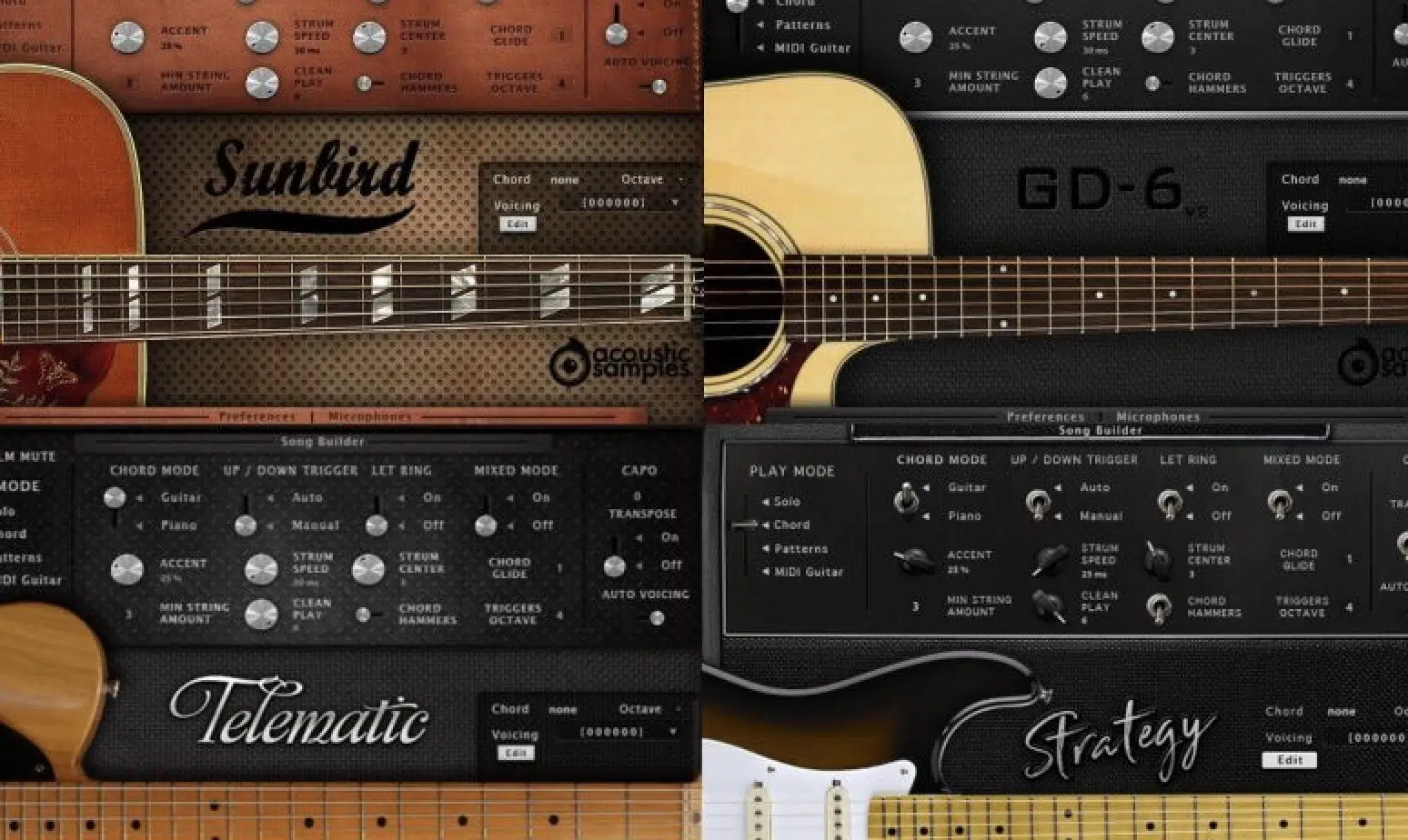
To transpose music when dealing with different instruments, you’ll need to understand that some instruments are considered ‘transposing instruments.’
This simply means they sound at a different pitch than written.
For example, a Bb clarinet reads a C on the staff, but it actually sounds a Bb, which is a whole step lower.
To transpose music for a Bb clarinet, you need to write the music a whole step higher than the desired concert pitch/original score.
So, if a piece is in the key of C major for a piano, you would write it in D major for the clarinet 一 ensuring that when the clarinetist plays the written D, it sounds as a C.
This way, it’ll match the other instruments in the ensemble.
Another example is the Eb alto saxophone, which sounds a major sixth lower than written; to transpose for it, you would write the music a major sixth higher.
Transposing for different instruments is essential in orchestration and arranging, especially when you need to ensure that all instruments are playing in harmony, despite their differences in pitch.
DAWs can also help with this by allowing you to input the music in concert pitch and then automatically transpose it for the specific key of that instrument.
It basically streamlines the entire process when you transpose music.
Tools and Techniques To Help You Transpose Music
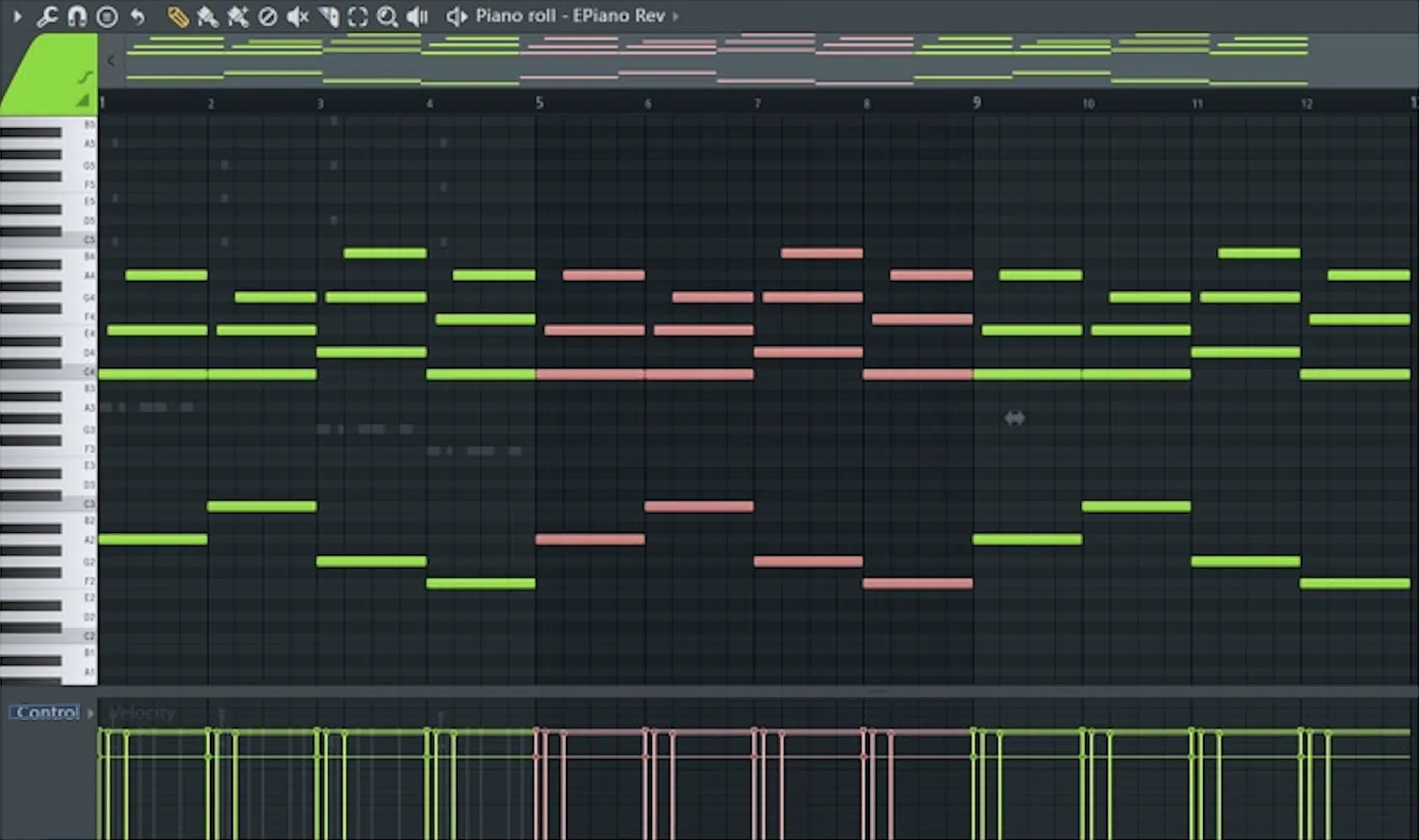
Transposing music correctly requires the right tools, and there are several top-tier options that can help you achieve the best possible results when you transpose music.
As we mentioned, you could use FL Studio’s pitch shift tool or Logic Pro X’s transposition feature to quickly shift MIDI or transposing audio files to a new key.
But when it comes to apps, iReal Pro is one of the best for musicians who need to transpose chord charts on the fly.
It allows you to input a chord progression and instantly transpose it to any key, which is perfect for rehearsals and when you play/perform live.
Another excellent tool is MuseScore, a free music notation software that lets you transpose sheet music easily.
You can select a passage or entire score and transpose it by any interval, which is super useful when working with complex arrangements.
For those who prefer an online solution, Transposr.com is a simple yet powerful web tool that transposes chord charts and sheet music within seconds.
It’s perfect for quick adjustments without needing to open your DAW to transpose music.
Whether you’re working digitally or with sheet music, these tools can seriously streamline the transposition process for ultimate accuracy and efficiency.
Bonus: Numbers Method vs Transposing By Intervals
When it comes to transposing music, there are basically two popular methods that stand out: the Numbers Method and transposing by intervals.
#1. The Numbers Method
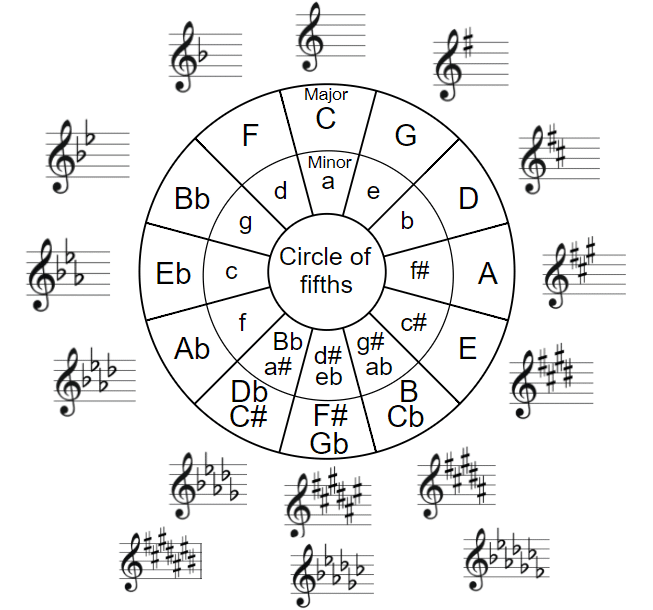
The Numbers Method involves assigning a scale degree to each note in a key… For instance, in the key of C major, C is 1, D is 2, E is 3, and so on.
This method allows you to easily transpose a melody or chord progression to another key by simply shifting the numbers.
For example, if you want to transpose a progression from C major to G major, you would replace the 1 (C) with G, the 2 (D) with A, and so forth.
Side note, a scale degree is just the position of one note within a scale, numbered from 1 to 7, based on its distance from the tonic, or the first note of the scale.
#2. Intervals Method
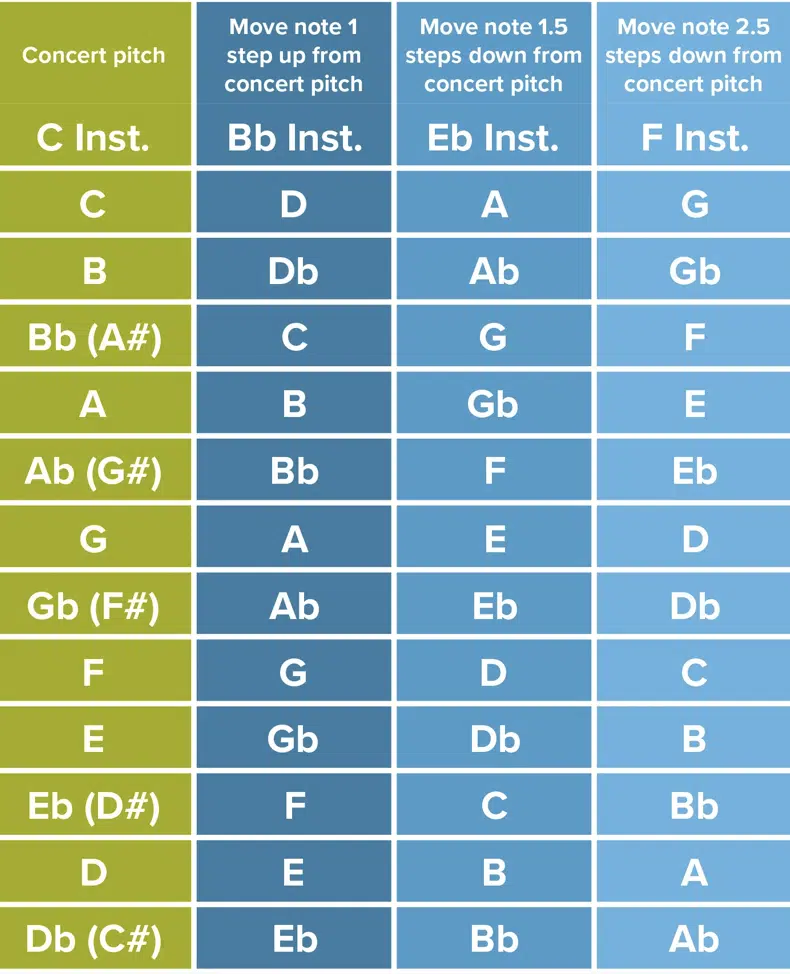
Transposing by intervals, on the other hand, requires you to shift each note by a specific interval 一 such as moving every note up by a whole step or two half steps.
It’s more direct and often preferred by musicians who are very familiar with music theory (of course) and can quickly calculate intervals.
For example, if you’re transposing a melody from F major to G major, you would move each note up by a whole step in the same way.
This will make sure the melody fits the new key signature after transposition.
NOTE: While the Numbers Method is intuitive and user-friendly, especially when transposing music for different instruments, transposing by intervals offers precision and is ideal for more complex transpositions.
Both ways have their advantages when you transpose music, so the choice really depends on the specific context and your music theory knowledge.
How to Transpose Music: Final Thoughts
When it comes to transposing music, it’s all about understanding the theory, mastering the techniques, and applying the right tools.
It can help you adapt music to different keys, align your arrangements with various instruments, and successfully create a polished, professional sound.
And now, with this ultimate guideline, you’ll be able to transpose melodies, chords, and entire arrangements with ease.
Plus, you’ll be able to handle any transposition challenge like a professional.
To make transposing music even easier, you’ve got to check out this invaluable MIDI Chord Pack.
This powerful pack contains over 1,200 drag-and-drop MIDI files that are fully customizable and transposable to any key.
Whether you’re working with major or minor chords, this MIDI Chord Pack allows you to effortlessly transpose progressions to fit your tracks’ needs.
It’ll save you endless time, help you stay in the zone, and enhance your skills when you transpose music.
It’s an incredible resource for experimenting with different keys and chord structures 一 giving you endless creative possibilities for your tracks.
Remember, when you transpose music, it is a skill that will grow stronger with practice, so keep experimenting and always push your boundaries.
Your tracks will sound better and more polished, and you’ll be well on your way to producing music that truly stands out and crushes the competition.
Until next time…







Leave a Reply
You must belogged in to post a comment.